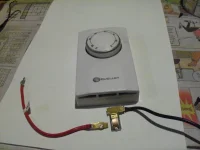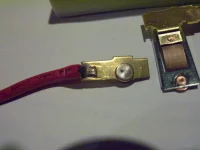Honeywell Thermostat https://www.homedepot.ca/product/ho...electric-baseboard-heat-thermostat/1000429052
In the Q&A for the product, company rep claims it is not suitable for 12V use
-------------------------------------------------------------------------------------------------------------------------------------------------------------------------------------
Kenworth
· 2 months ago
Answer this Question
In the Q&A for the product, company rep claims it is not suitable for 12V use
-------------------------------------------------------------------------------------------------------------------------------------------------------------------------------------
Kenworth
· 2 months ago
Will this work on 12 volt to turn an automotive heater motor on and off.
1answerAnswer this Question
Resideo Team
· 2 months ago
No, the Honeywell Home Manual 2-Wire Electric Baseboard Heat Thermostat provides line voltage control of a radiant cable, electric baseboard, and resistive rated fan forced heaters. - Jerry
--------------------------------------------------------------------------------------------------------------------------------------------------------------------------------
It raises the question - why not? Do low voltage switches need a different contact material? Back story to my question - four years ago I installed a line voltage wall stat for 24V AC control of a baseboard heater (used 24v transformer and relay).The stat just failed - it will not make contact sometimes and will therefore not turn the heater on reliably. Four years is a short life for that stat especially since it is only switching 60 ma at 24V ac. Thought I would look further into it. A google search did not turn up anything. Second pic shows the contacts and they do not look excessively burned.

